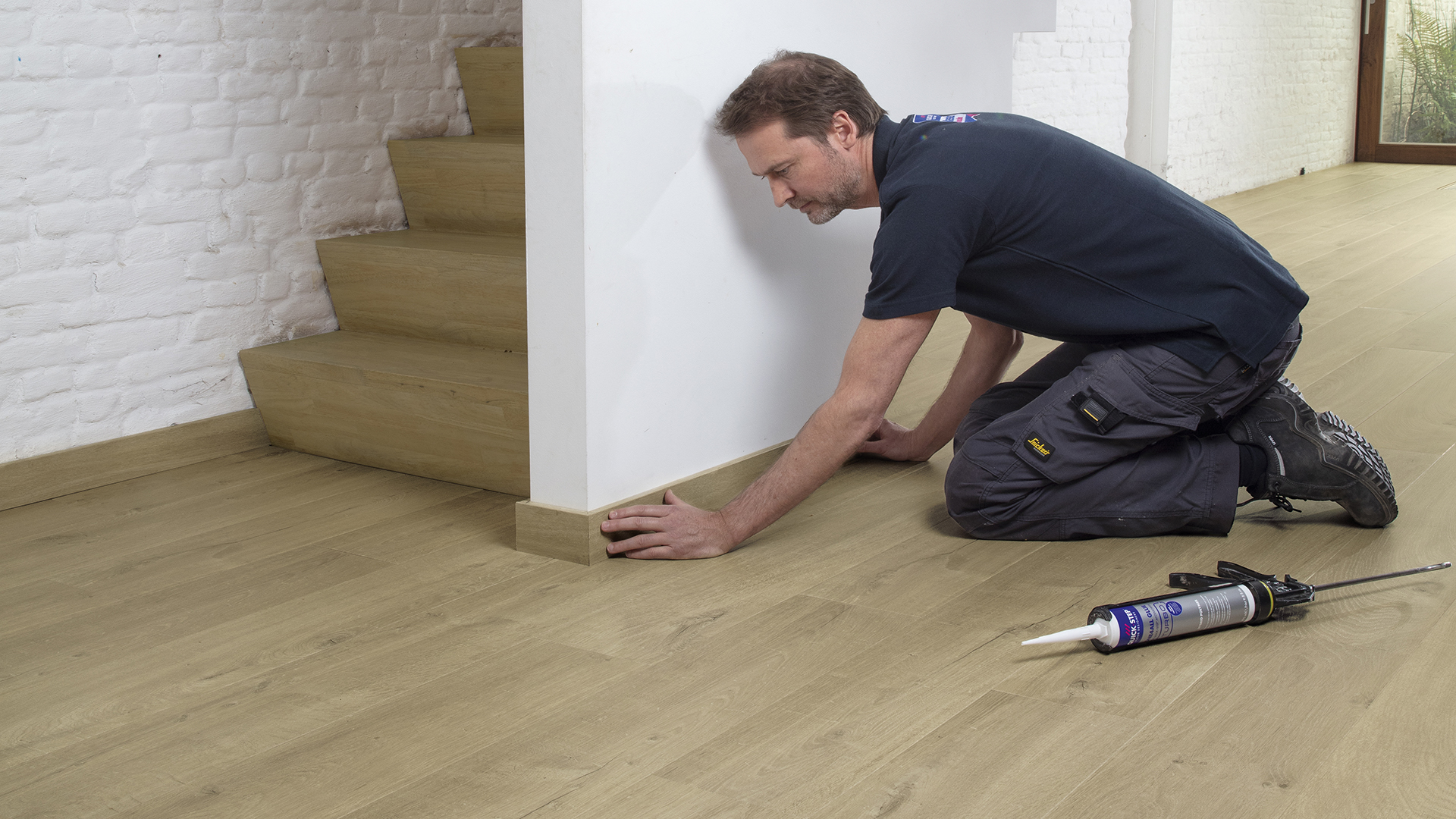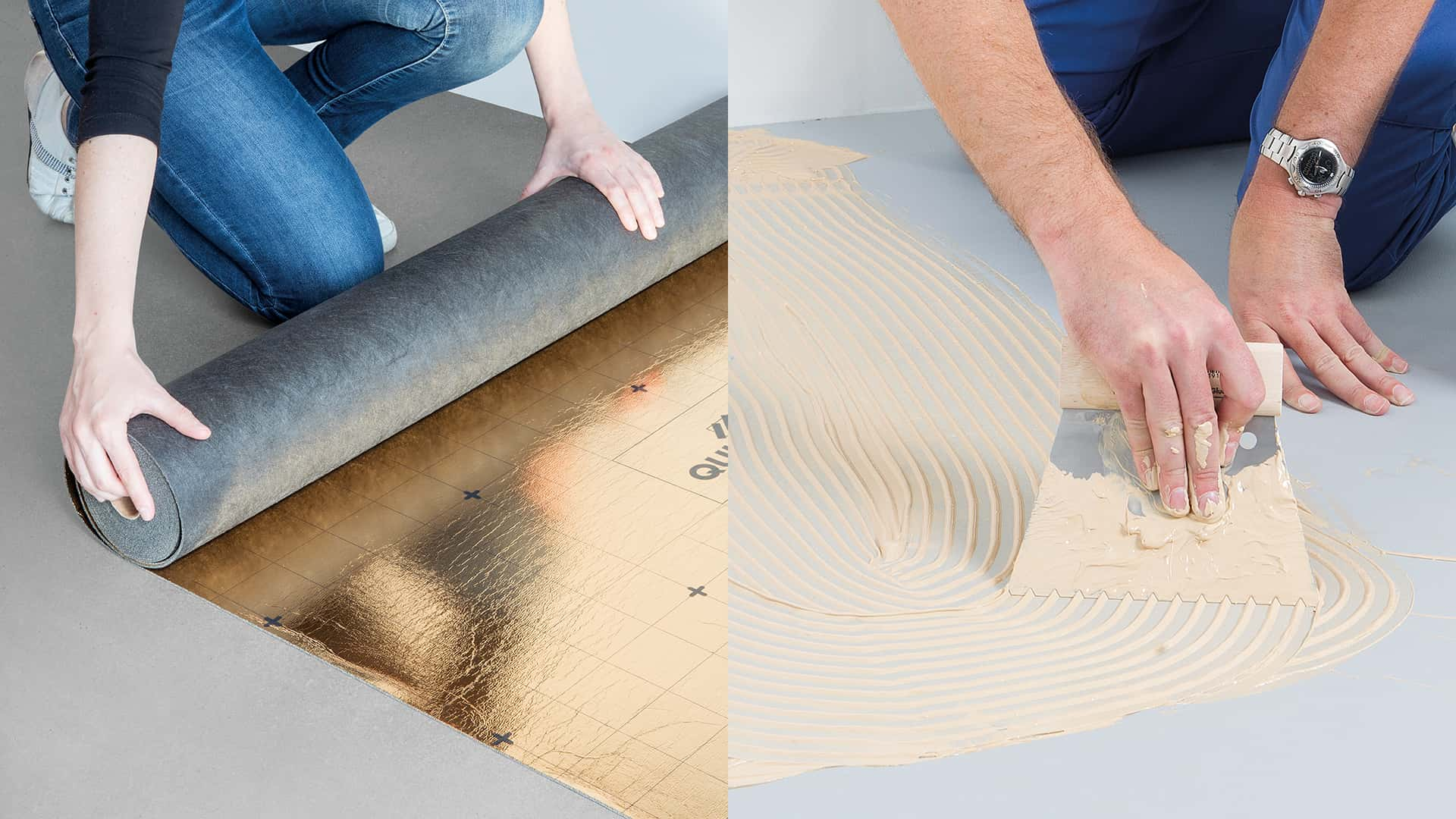
HOW TO LAY
TIMBER FLOORING
DIY vs. an installer:
the comparison
DO IT YOURSELF

- Install the floor yourself with our convenient Uniclic (Multifit) click system
- Compatible with floor heating
- User-friendly installation instructions and videos at your disposal
CONSULT AN EXPERT

- Call upon the services of an installer
- Perfect results guaranteed, from the timber flooring itself to the matching skirting boards
How to lay your own Quick-Step timber floor
STEP 1: Choose your installation type: click or glued-down
Timber flooring can be installed one of two ways: clicked – also known as ‘floating installation’ – or glued-down. If you choose the click method, it is easier to replace individual planks when necessary, without damaging the rest of your timber floor.
We advise you to always check the installation instructions for your floor and installation method before getting started.

STEP 2: Prepare your subfloor
How you proceed depends on the type of subfloor you’re working with, so you’ll have to inspect it. We highly recommend working on a level, stable, and clean subfloor. Don’t forget to check for any loose parts – wood splinters, loose planks or tiles etc.
How big can the joints in your existing tile floor be? How can you level out irregularities? Find out how to prepare your subfloor properly.
What about underfloor heating? Take your time to read the installation instructions so you are fully prepared to get started!
STEP 3: Choose your underlay or glue
Choosing the right underlay or glue – depending on you preferred installation method – is a crucial part of installing your brand-new timber flooring in a hassle-free way.
Our specially designed Quick-Step underlays are damp-proof, insulating, noise-reducing, and self-levelling. Thanks to the smooth top surface, installing the timber floor and ensuring ample expansion afterwards is a piece of cake.
Prefer to work with a glued-down installation? We’ve got you covered there too, with high-quality glue that’s sure to last you a lifetime and keep your timber floor in place.

STEP 4: Collect your tools
Want to save yourself a few trips to the hardware store and avoid other unnecessary interruptions during the installation? Make sure you have a couple of essential tools at hand before you get started.
A hammer and a saw are among the usual suspects, but there are several other tools that will make your life a lot easier.
STEP 5: Install your underlay
If you chose to install your timber floor using an underlay, it’s time to get started! If you prefer a glued-down installation, you can skip to step 6.
- Roll out your underlay and push it as closely as possible against the wall.
- Lay one row at a time and make sure you go in the same direction as you plan to lay your floor (see step 6).
- Use the flap and glue strip for easy installation of the underlay with an integrated damp-resistant screen. When you cannot use the flap and strip, use an adhesive tape to attach the rows together in order to make the installation damp-proof.
STEP 6: Laying your timber floor
The following instructions are required for both glued-down and floating installation.
- First, check how many full rows of planks you will need by dividing the width of the room by the width of a plank.
- Make a mark on the wall where you’ll be laying your last full plank. The last plank should be at least 4 cm wide for easy installation.
- Unpack your planks and mix them up to avoid adjacent identical patterns and colour variations.
- For an optimal result, start laying your first row of timber planks in line with the longest wall, but do not flush against it (as walls are hardly ever perfectly straight).
- Make sure to alternate your alignment so that end joints of successive rows are never in line. We recommend leaving at least 30 cm between them.
- Click the first plank of the second row into the first plank of the first row (see video) and keep going like that.
STEP 7: Saw your timber floor
It’s heart-breaking, but there’s no way around it: you will have to saw your timber floor to make sure it fits your space perfectly. But don’t worry! We’ll show you exactly how to do it, and you’ll be blown away by the result.
Wear gloves and use a pencil to draw your cutting lines. Always saw your planks with the top surface decoration facing upwards.
STEP 8: Finish your timber floor in style
With your timber floor in place, you’re almost there! Now it’s time to complete the picture with matching skirting boards, finishing profiles, and other fine touches. After all, it’s all in the details.
Still got questions?
Need help finishing your project to your satisfaction?
Take a look at our help centre, which contains answers to the most frequently asked questions!





